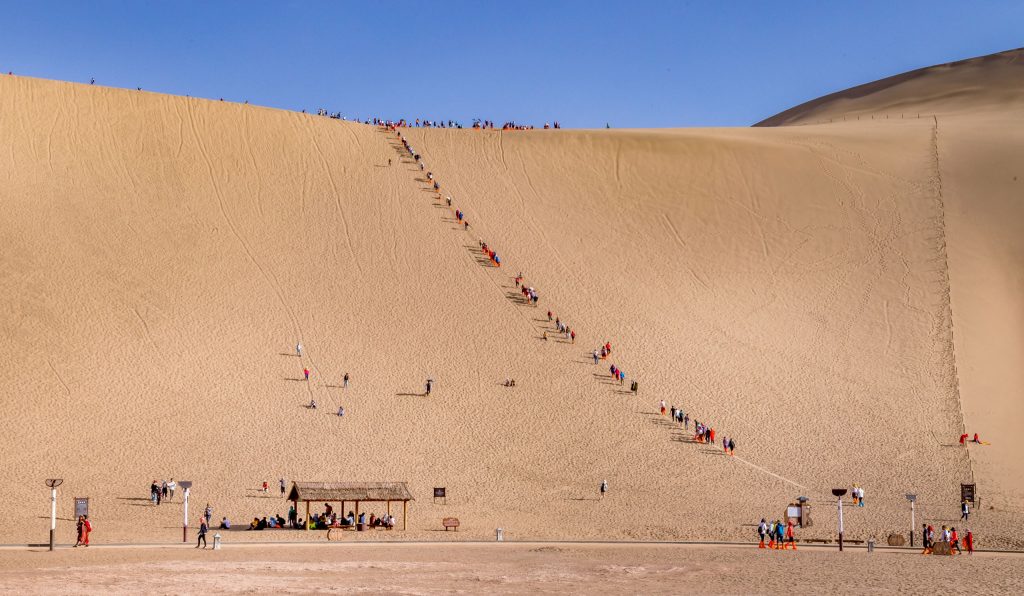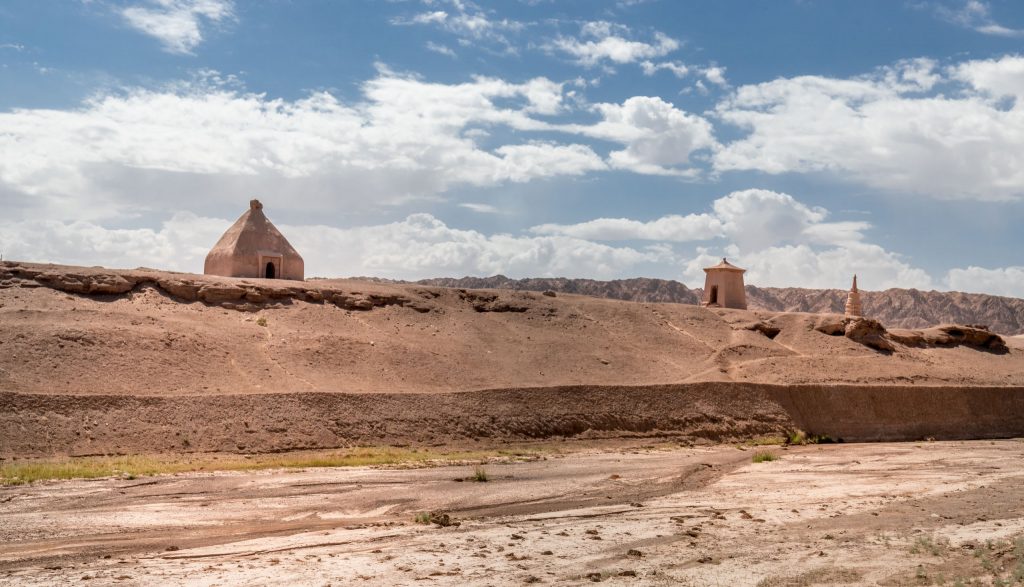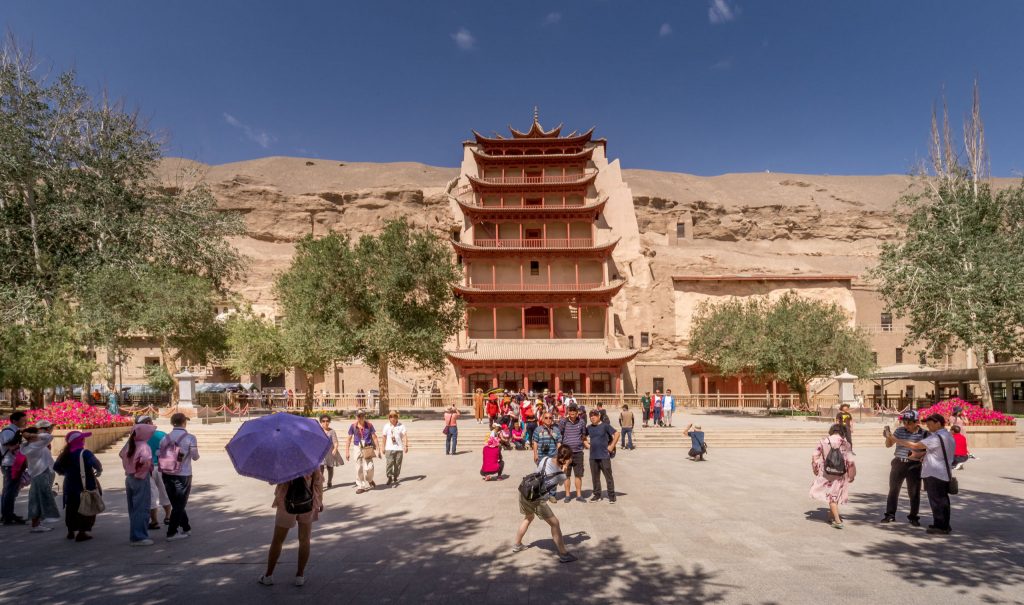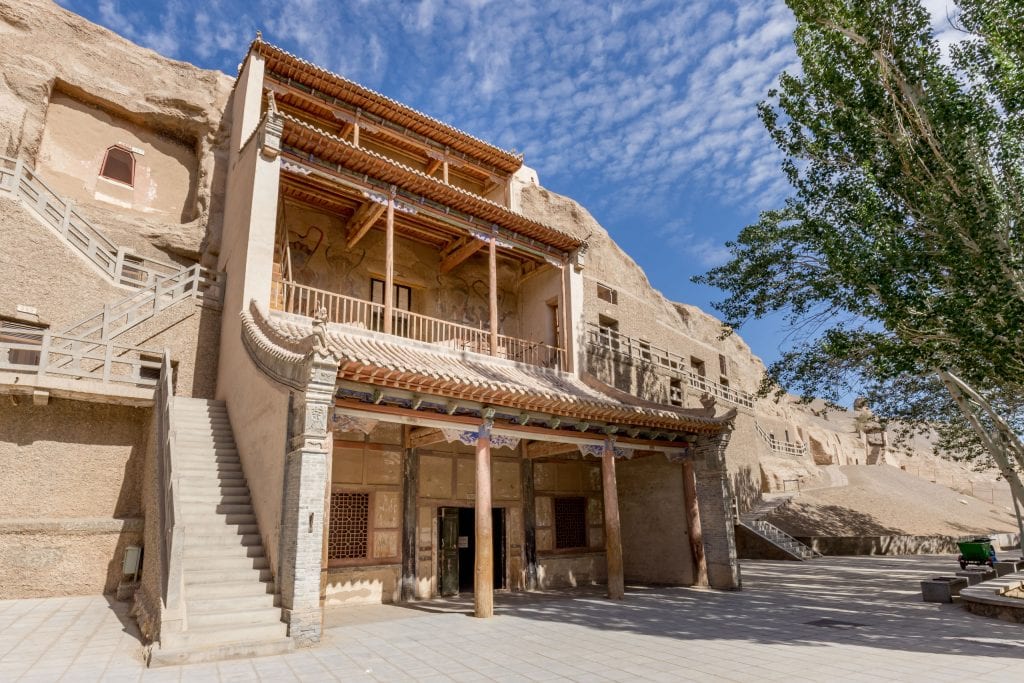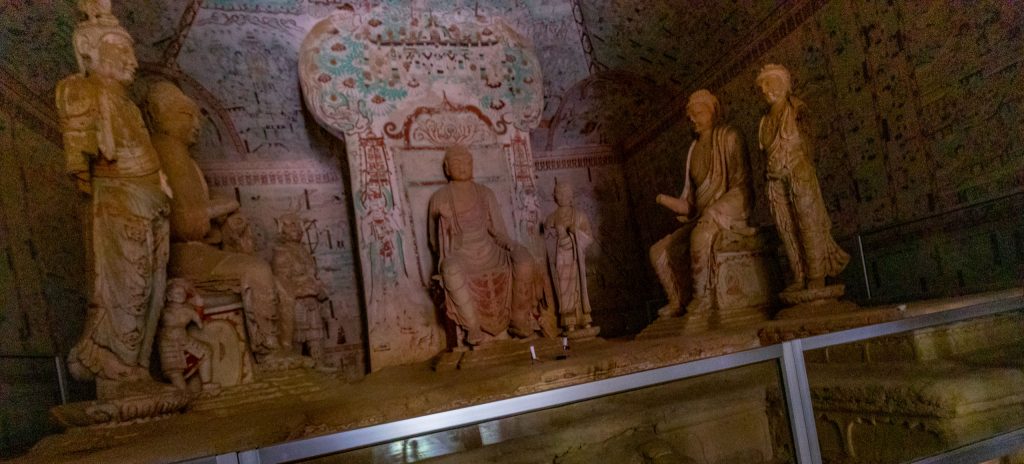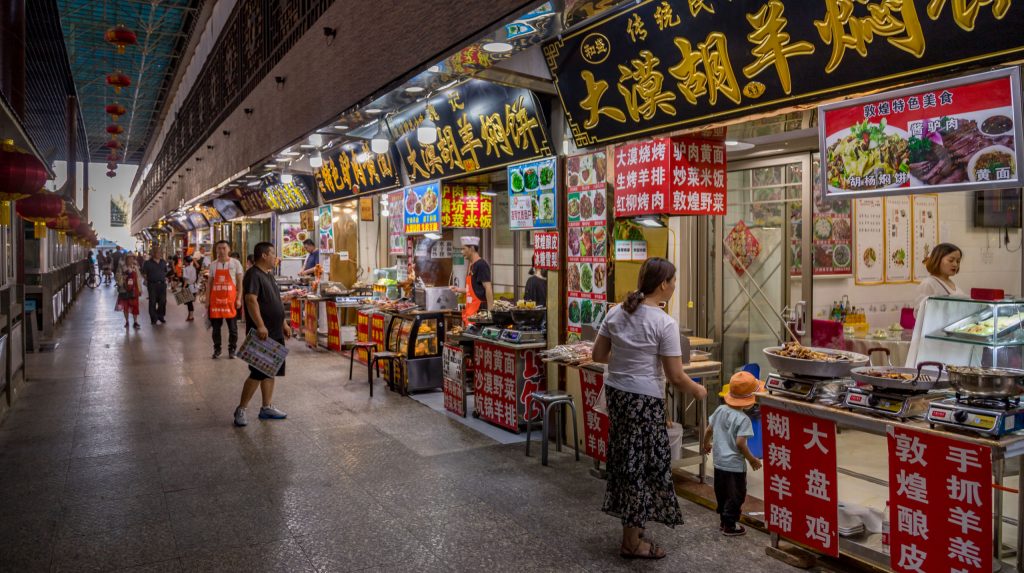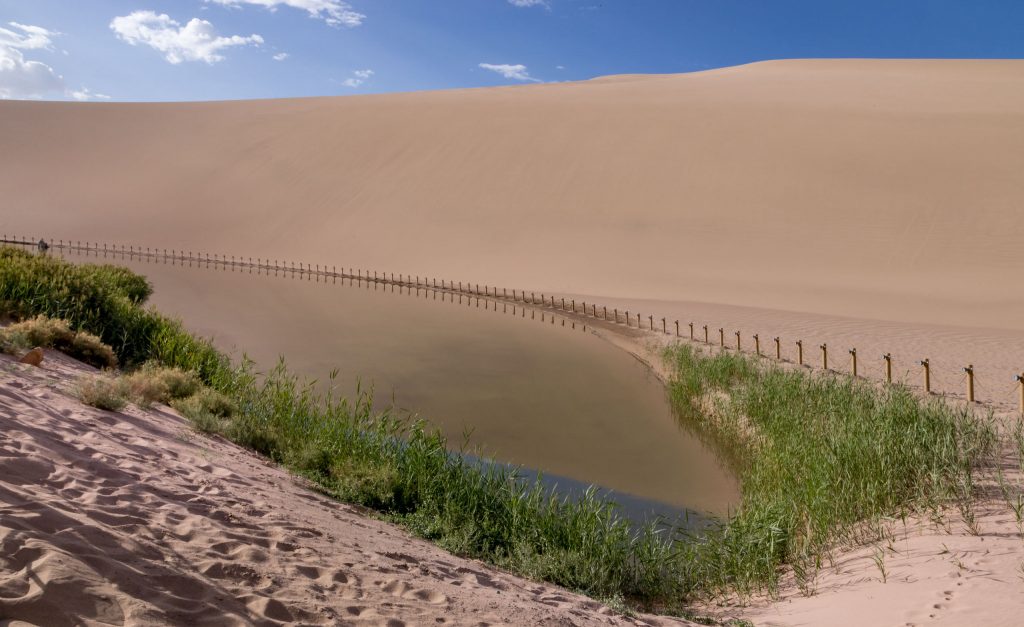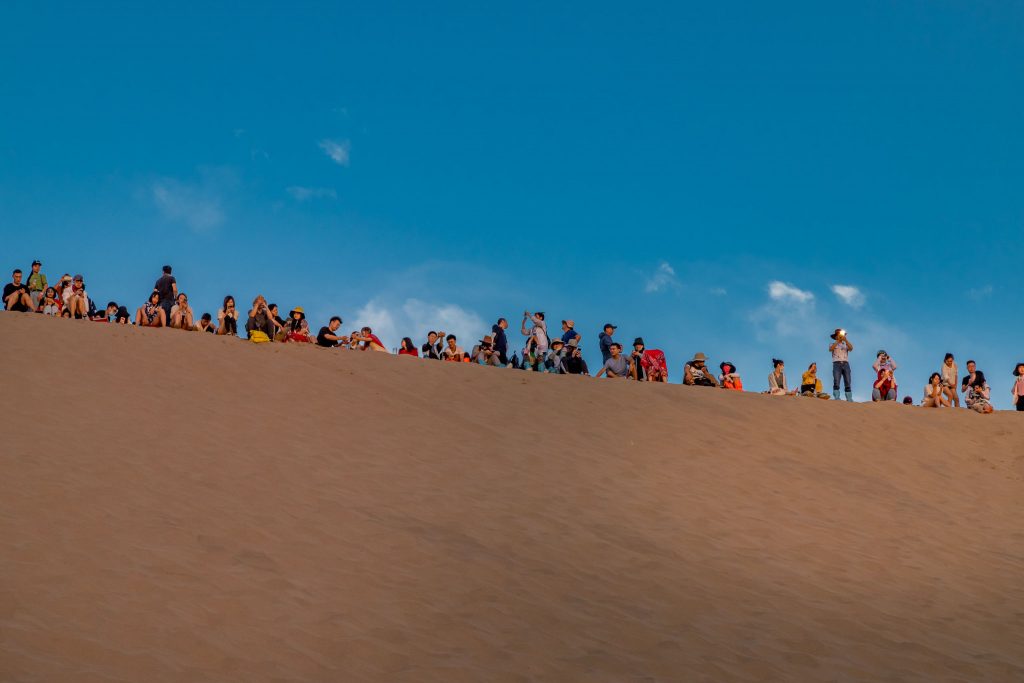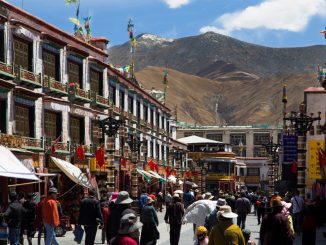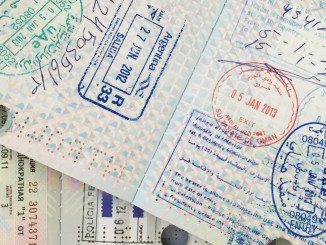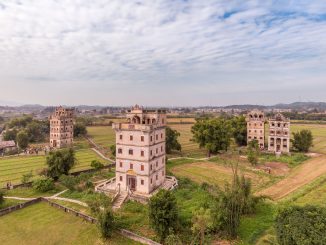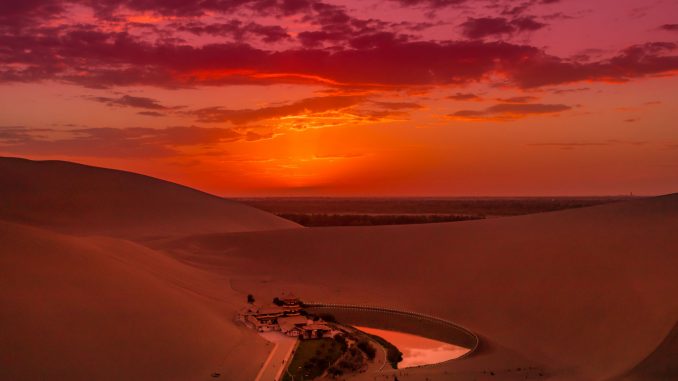
Table of Contents
Dunhuang in north western Gansu Province of China was once a very important city on the silk road. It was founded in the late 2nd century BC and its name, meaning to flourish and prosper, reminds us of its importance. Today, the city itself isn’t of much interest but has several very important places of interest surrounding it. In this Dunhuang day trip article I’ll take you on a Mogao Grottoes tour and we’ll watch sunset at Crescent Lake (Yueyaquan / Mingshashan). As a bonus you could add the Western Thousand Buddha Caves for an afternoon visit. The Mogao Caves are truly magnificent and their UNESCO World Heritage Status is deserved. Those 2 or 3 places make up a great day trip in Dunhuang.
Dunhuang Mogao Caves tour
You cannot do a Mogao Caves tour on your own. It’s (very well) organized and limited to 6000 visitors a day. As a foreigner you cannot book tickets online (at time of writing) so they do allow you to buy them a day in advance but if you’re not there you have to arrange tickets through a guide/driver. If you speak Chinese you can do it online at the Dunhuang Academy. This especially applies in high season as tickets do sell out and you’ll be left with the Western Thousand Buddha Caves as alternative which are nice as well but not the highlight of Dunhuang. Take the early (9AM, English) tour in the morning as a tour takes 3-4 hours at least so that you have enough time left for the rest of his Dunhuang day trip.
BE EFFICIENT: To visit every place efficiently it’s great to have a private driver and I highly recommend Richard (dunhuang.richard [at] 163.com / wechat: 13993713080). He can also arrange the Mogao Caves tickets in advance for you as they do sell out during peak seasons.
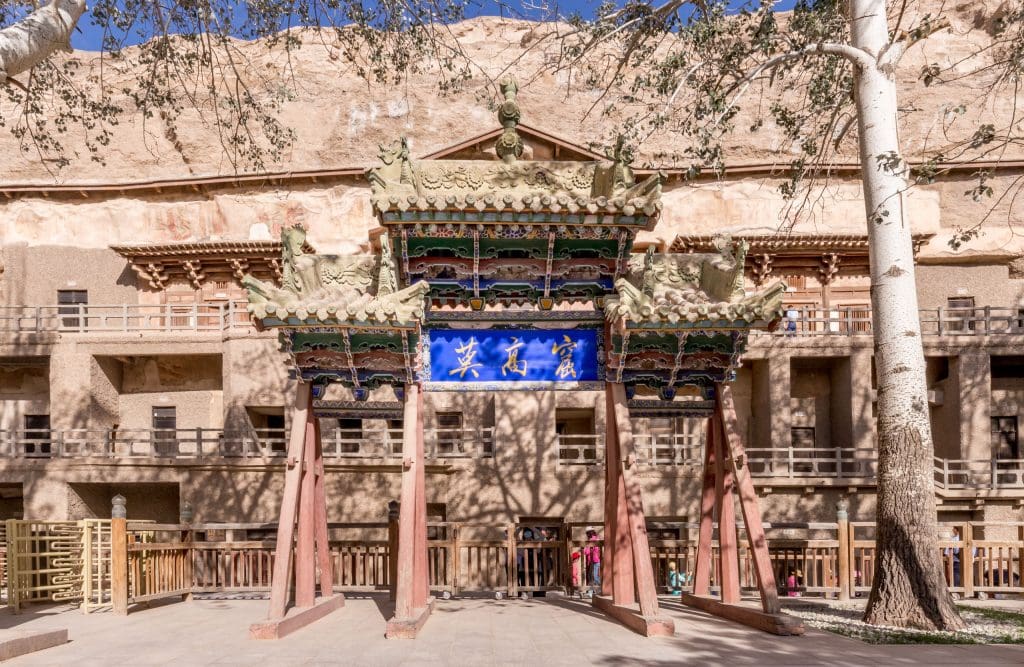
Mogao Caves history
The Mogao Caves or Mogao Grottoes are also known as the Thousand Buddha Grottoes or Caves of the Thousand Buddhas. Although Dunhuang was an important outpost since the late 2nd century BC it wasn’t until the mid-4th century AC when the first caves were dug out. This was when the Buddhist monk Yuezun travelling the Silk Road has a vision of a 1000 Buddhas at the place.
Caves where dug, sculptures carved, paintings pained for the next 1000 years. The largest Buddha sculptures were carved during the Tang Dynast at the turn of the 7th century. The Mogao Caves became an important worship place in Buddhism. In the late Yuan Dynasty fewer new caves were made and at the end of the 14th century the site became more and more forgotten. At that time Islam became the major religion in the area.
It was until the late 19th century that Western archeologists started to re-discover the site. One major discovery was the library cave as it contained many manuscripts from the time the site was in use. There are a total of 735 Mogao Caves. Some are beautiful decorated; some are merely used for meditation or as a burial chamber. A Mogao Grottoes tour takes you to a variety of them.
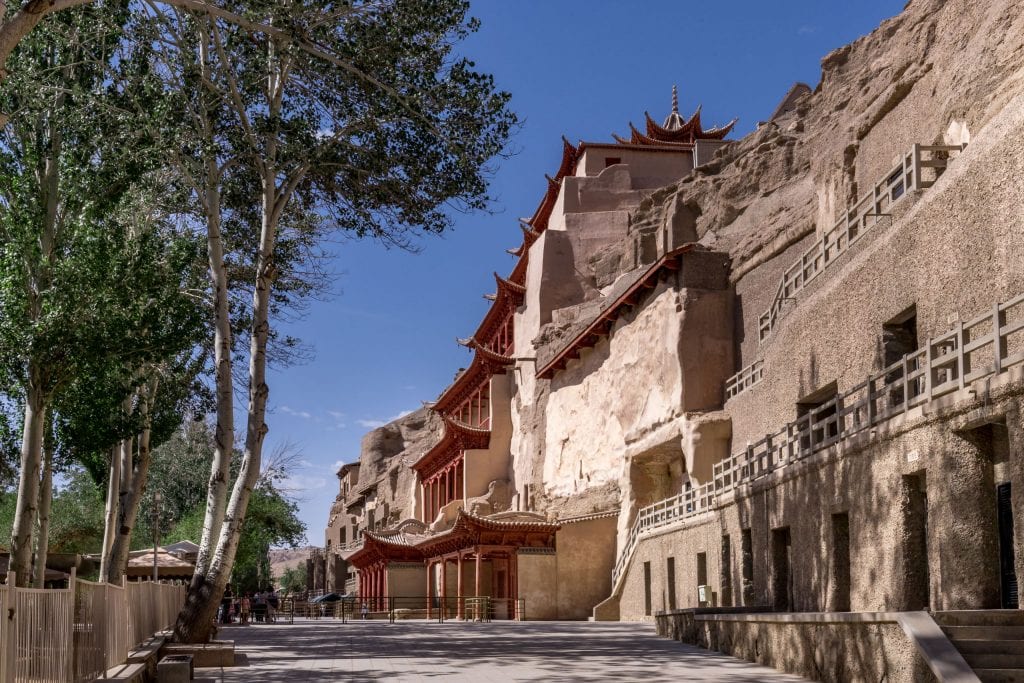
Mogao Cave day trip
A Mogao Cave visit starts at the visitor center. You’ll first see a short movie about the history and second a 3D movie of some of the most beautiful caves. This 3D movie is very impressive as you get to see some caves that are off limits to tourists. After the movies it’s time to go to the caves which are about 25 kilometers out of the city center. Do NOT go yourself directly to the caves as you won’t be able to get in nor buy tickets. I had to wait 30 minutes to see if more English-speaking people showed up. Just 3 did so it was kind of a private tour. Photos aren’t allowed inside but the Chinese were doing it everywhere, so I decided to make a few. Without flash of course so it doesn’t damage the colors.
Tours include about 12-15 caves. They include the most important ones, but each tour also visits different caves so that not too many go inside on a daily basis. Each cave is simply amazing! The color paintings, the sculptures, and other pieces of art. Compared to my Longmen Grottoes visit or the Yungang Grottoes visit there is much and much more color! It’s a kind of combination of those with the beautiful colors at the Dazu Rock Carvings but on a much larger scale. It’s difficult to describe with words but having seen a lot around the world I was truly amazed! It takes about 90 minutes to tour the various Mogao Caves after which I went for lunch in Dunhuang.
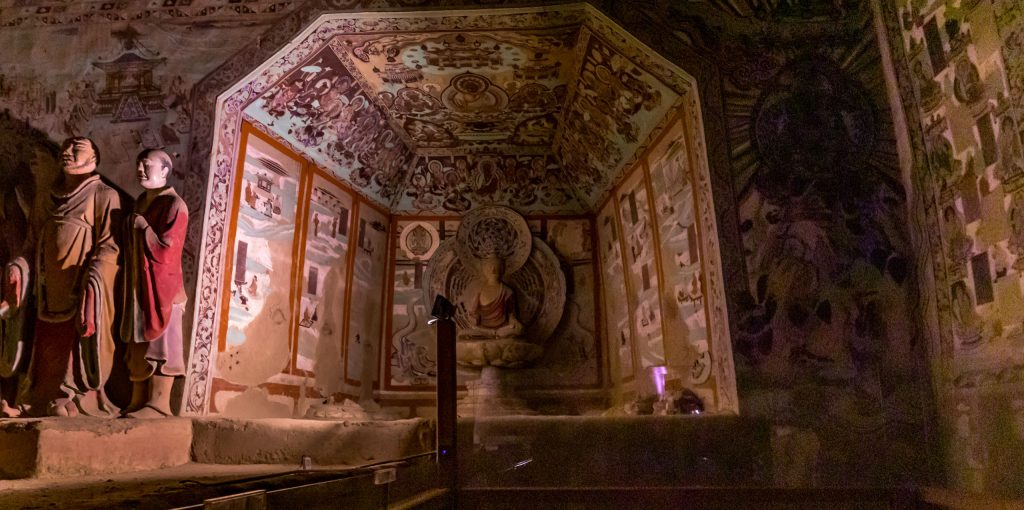
Bonus tour: Western Thousand Buddha Caves
If you’re interested to see more caves, then you can go to the Western Thousand Buddha Caves after lunch. I visited on my way to the Yangguan Pass and Yardang National Park but that wasn’t the best idea as it took to much time and I had to hurry. These caves are not part of the UNESCO World Heritage Site and just about 40 caves still exist. They were built from the 6th to the 14th century and worth a visit. Many people visit these caves if they couldn’t get tickets for the Mogao Caves. A visit takes about an hour plus about an hour driving up and down.
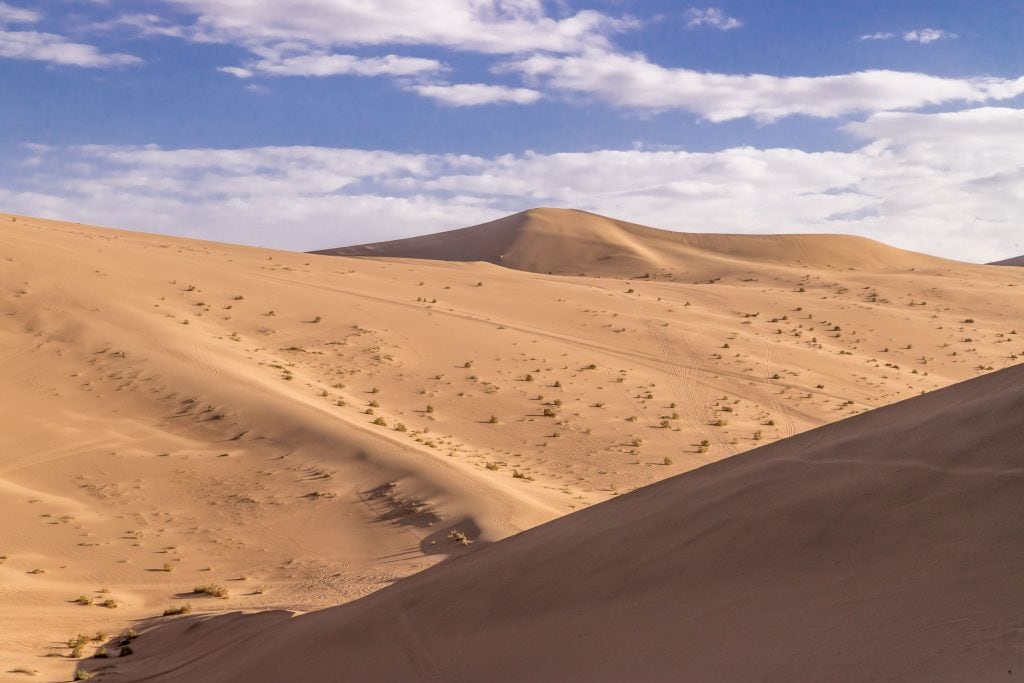
Crescent Lake sunset tour & camel ride
After visiting the various caves, I had my private driver drop me at the Crescent Lake (or Yueya Spring) entrance. It’s easy to get back to town from there by taxi or even walk so no need to keep a driver waiting. It was already 5PM so I just walked towards Crescent Lake for a view up close. If you want to make a camel ride, which doesn’t take you all the way to the lake, you should not go to the western caves. Camel riding does give you that silk-road feeling! The same applies if you want to drive an all-terrain quad or make an ultra-light flight. I had done all that before, but I never saw a lake in the middle of the desert before. That was a first for me! After wandering around the pagoda, I decided to walk up the largest dune for sunset. Just follow the crowd!
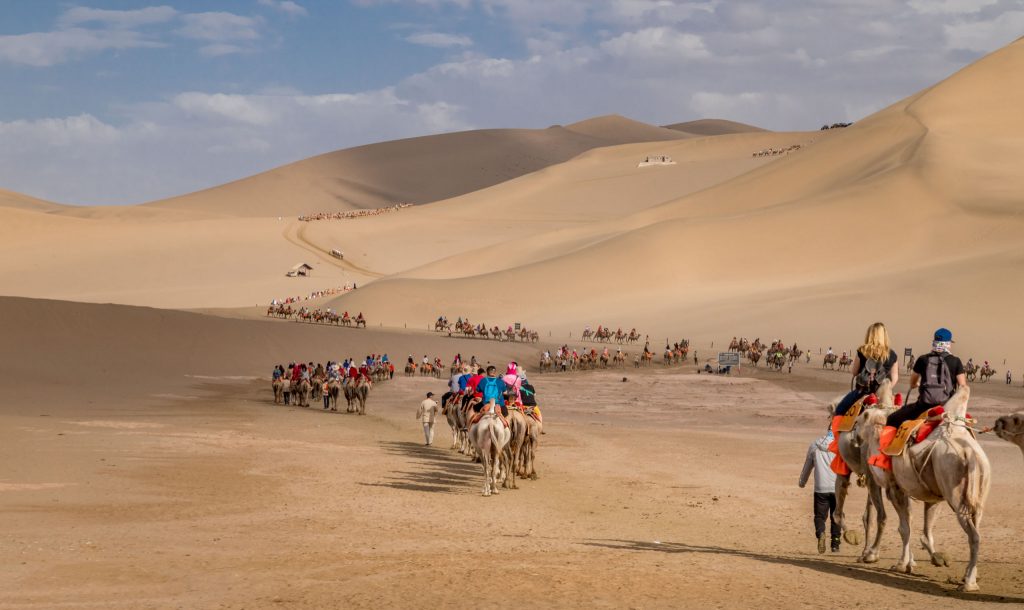
Once at the top of the dune I looked for a great spot so that I would have a nice view on Crescent Lake below. Just look for rows of people with camera’s on tripods. That’s the place to go for the best photos. That is NOT on the highest edge but on the rim just below. Then it’s waiting for sunset. If you’re lucky the clouds with turn pink and purple as you can see in the photo at the top of the page. It for sure was one of the better sunsets I have seen like sunrise at the Borobudur!
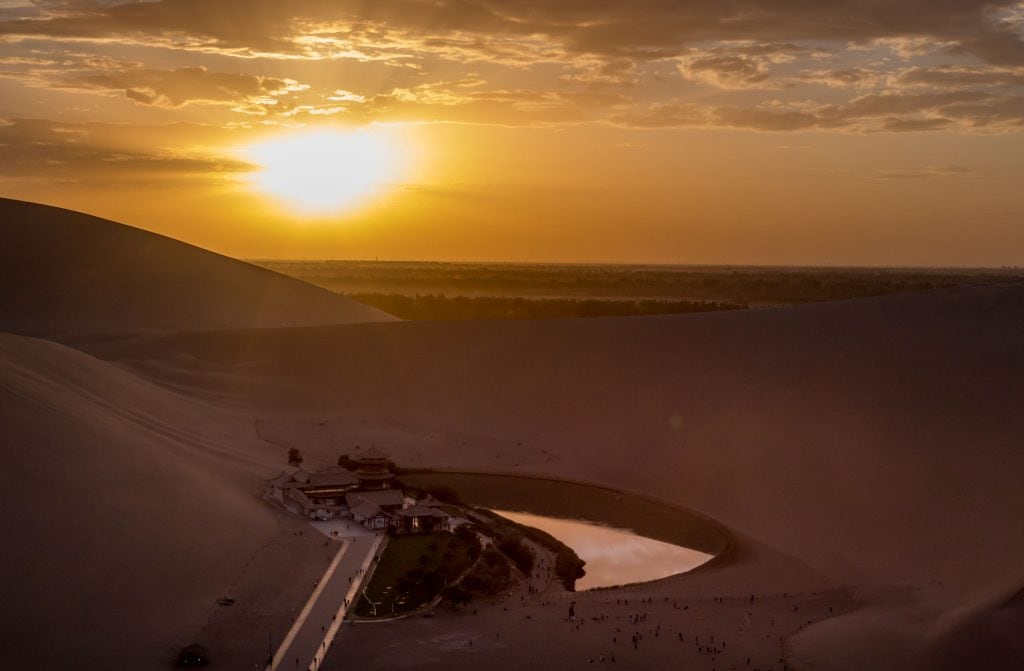
It was my first time visiting north western China as the previous 20 or so times I travelled to other regions. The Mogao Caves are far away but a short flight to Dunhuang is well worth adding to a China itinerary. Crescent Lake and the caves aren’t the only sights in the area as there is more! I will cover later my day trip to the Yumen Pass, Yangguan Pass and Dunhuang Yardans and another day to Yulin Grottoes, Suoyang City and Xuanquan Posthouse.
I travelled to China many times and I recommend you reading some of my other stories as well like my Yunnan itinerary. If you go further up the Tibetan plateau then my Tibet itinerary is a good read as well.
Stay tuned for more stories and subscribe to the newsletter or follow CTB on social media (Facebook, Twitter, Instagram including Instagram stories; on all social media you can find CTB @christravelblog) to get updated information.
Did you visit Mogao Caves & Crescent Lake too or do you have questions? Please leave a comment at the bottom of the page. Love to hear from you!
Further reading
Sometimes it’s impossible to cover every single place of interest, activities, food, and others that might be relevant. In the below list you find a list of relevant links with further information about Mogao Caves & Crescent Lake which I have carefully curated. These will help plan your trip even better.
- Dunhuang was a very important city on the old Silk Route but the route spans much more countries like Azerbaijan, China, Georgia, Kazakhstan, Turkey, Turkmenistan, Uzbekistan. If you’re interesting travelling the route, then check out this Silk Route guide for more information. It’s very handy and contains a lot of information.
Gallery Mogao Caves & Crescent Lake
Click an image for a full screen gallery of more photos taken during this trip. If you like to use any photo for commercial, private or editorial use please contact first for permission and/or pricing.
